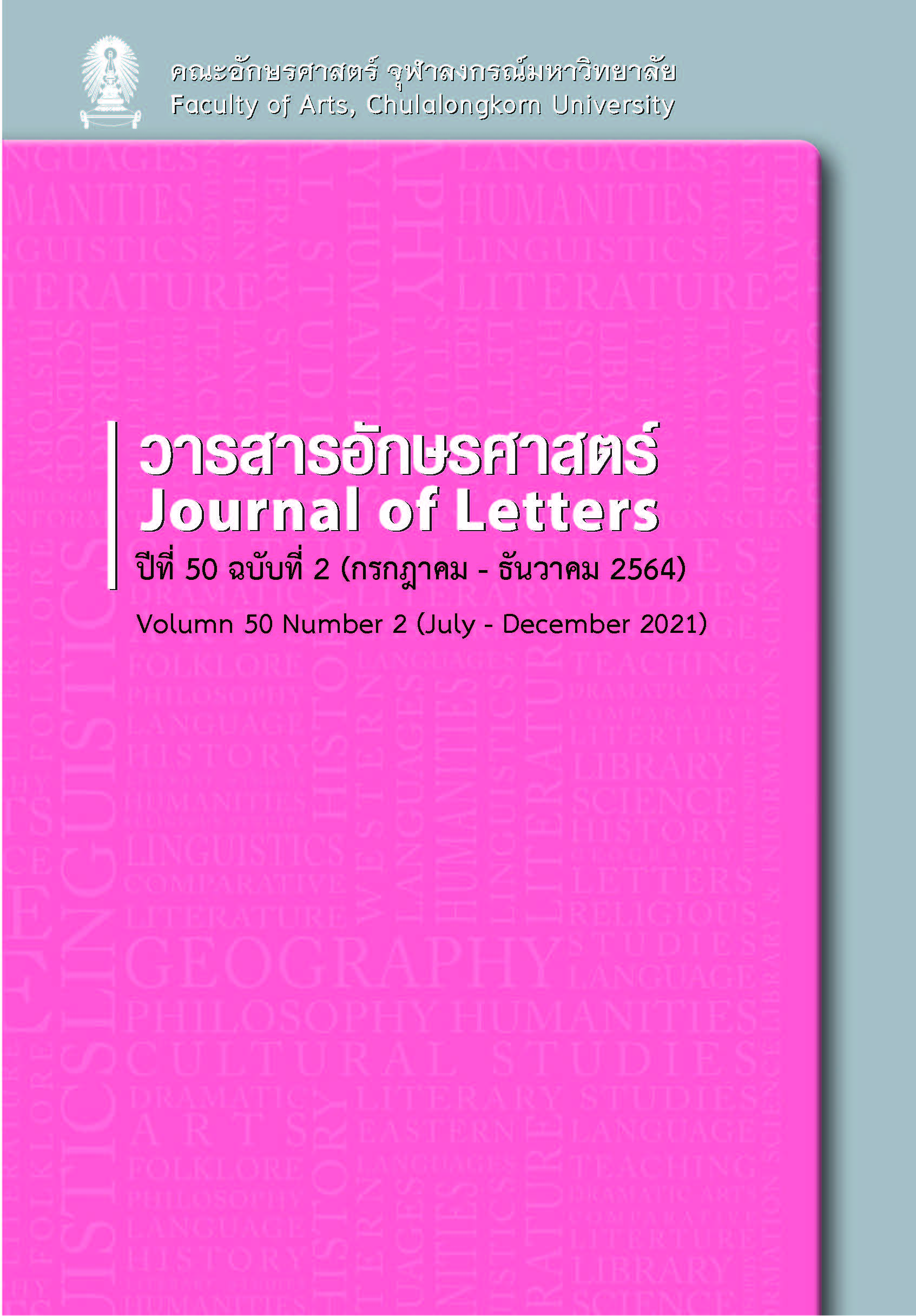Some notes on language in the Chinese Versions of the Saddharma Puṇḍdarīka Sūtra
Keywords:
the Saddharma Puṇḍdarīka, Sūtra, Dharmarakṣa, Kumārajīva, Mahāyāna Sūtra, translationAbstract
The purpose of this article is to compare versions of the Saddharma Puṇḍdarīka Sūtra in Chinese. The study found that the Saddharma Puṇḍdarīka Sūtra has been translated into many Chinese versions, three of which exist in the present: Dharmarakṣa’s, Kumārajīva’s, and Jnanagupta & Dharmagupta’s version: this last being a supplemented version of Kumārajīva’s and therefore not a new translation. Among the Chinese versions mentioned above, Kumārajīva’s is the most popular. A comparison between Dharmarakṣa’s and Kumārajīva’s version reveals many differences, particularly in numeral usage, transliteration of proper names, use of religious terms, four-character phrases, continuous reduplication, precise description, use of colloquial sentences instead of archaic ones and descriptions of certain narratives. Kumārajīva’s version compiled in the Great Piṭaka of Emperor Qianlong, the Northern Piṭaka of Emperor Yongle, the Korean Great Piṭaka and the Taisho Great Piṭaka are slightly different. As for word usage, there are two main differences: use of the same word with different writing and use of different words with different meanings. As for the context of the sutra, it is found that certain verses of Chapter Twenty Three of The Former Deeds of Bodhisattva Medicine King in the Korean Great Piṭaka and the Taisho Great Piṭaka do not exist in Kumārajīva’s versions in the Great Piṭaka of Emperor Qianlong and the Northern Piṭaka of Emperor Yongle. It is assumed that these verses may have been later supplemented. The comparison between the Chinese versions of the Saddharma Puṇḍdarīka Sūtra not only contributes to the study of the sutra but also to the study of Chinese used in the Chinese version of the Saddharma Puṇḍdarīka Sūtra.
References
ภาษาไทย
Prapod Asavavirunhakarn ประพจน์ อัศววิรุฬหการ. 2014. Phothi sattawa chanya: Makkha phue mahachon โพธิสัตวจรรยา: มรรคาเพื่อมหาชน [Bodhisatva Caryā: The Path for All Living Things]. Bangkok: Research and Publication Division, Faculty of Arts, Chulalongkorn University.
ภาษาต่างประเทศ
Lopez, D., Jr. 2016. The lotus sutra: A biography. New Jersey: Princeton University Press.
Miaofa Lianhua Jing妙法蓮華經 [Lotus Sutra],Gaoli Dazangjing高麗大藏經 [Korean Great Piṭaka] (Number 116). https://ed29.com/wiki/%E9%AB%98%E9%BA%97%E8%97%8F_K.0116_%E5%A6%99%E6%B3%95%E8%93%AE%
E8%8F%AF%E7%B6%93
Miaofa Lianhua Jing妙法蓮華經 [Lotus Sutra],Qianlong Dazangjing 乾隆大藏經 [Qianlong Great Piṭaka] (Volume 32, Number 130). http://www.suttaworld.org/Collection_of_Buddhist/Chiarnlurng_Tripitaka/pdf/32.pdf.
Miaofa Lianhua Jing妙法蓮華經 [Lotus Sutra],Yongle Northern Piṭaka永樂北藏 [Yongle Northern Piṭaka] (Volume 36, Number 130). https://ourartnet.com/Yong-Lebeizang/SUTRA/036.pdf
Miaofa Lianhua Jing妙法蓮華經 [Lotus Sutra],法華部 [Fahua Section] , Taishō Revised Piṭaka大正新脩大藏經 (Volume 9, Number 262). https://21dzk.l.u-tokyo.ac.jp/SAT/index_en.html Tamura, Yoshiro. 2014. Introduction to the Lotus Sutra (G. Reeves & M. Shinozaki, Trans.). Boston: Wisdom Publications.
Tianpin Miaofa Lianhua Jing添品妙法蓮華經 [Extended Lotus Sutra],Qianlong Dazangjing 乾龍大藏經 [Qianlong Great Piṭaka] (Volume 33, Number 135).
http://www.suttaworld.org/Collection_of_Buddhist/Chiarnlurng_Tripitaka/pdf/33.pdf Zhengfahua Jing正法華經 [Lotus Sutra],Qianlong Dazangjing乾隆大藏經 [Qianlong Great Piṭaka] (Volume 32-33, Number 134).
http://www.suttaworld.org/Collection_of_Buddhist/Chiarnlurng_Tripitaka/pdf/32.pdf
Downloads
Published
How to Cite
Issue
Section
License
Copyright and plagiarism
Authors are responsible for obtaining permission to use copyrighted materials from copyright owners. Authors are responsible for observing requisite copyright law when quoting or reproducing copyrighted materials. Quotations and reproductions of content from other published sources must be accompanied by a reference and all sources should be clearly listed in the references section. Quotations and reproductions of content from external sources without due attribution could be considered a severe infringement of academic conduct and may constitute a legal offence under the Copyright Act of B.E. 2537. Any legal ramifications arising from the infringement of copyright regulations would be the sole responsibility of the author(s).



